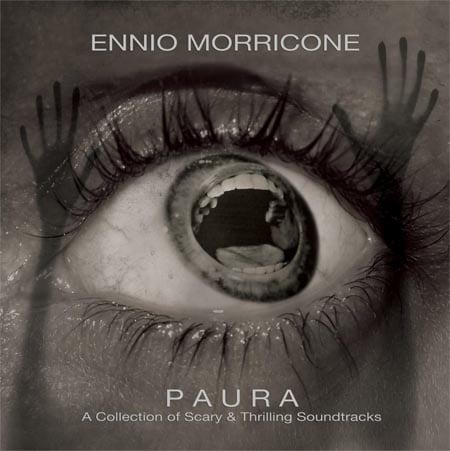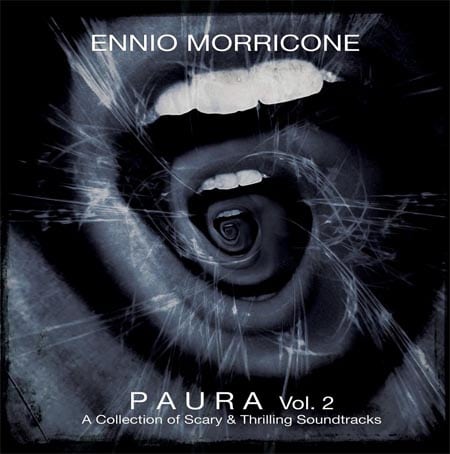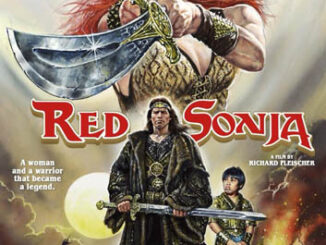The news that Ennio Morricone died hit this fan really hard, so he decided to share his current fifteen [why fifteen – well I attempted to do ten and was getting stressed about having to leave a few out a few that I love greatly] favourite soundtracks from this great composer. This is not in intended as a ‘best of’ list, though a few of my picks might deserve to be included in that. Rather, this is intended as a sort of personal tribute to and celebration of the man known quite rightly as ‘Il Maestro’.
15/ THE FORBIDDEN PHOTOS OF A LADY UNDER SUSPICION [1970]
While Morricone’s score for Dario Argento’s The Bird With The Crystal Plumage commenced Argento’s giallo phase, his work here contains more of the devices that he’d use and develop through this particular part of his career, be it the nightmarish atonal suspense material or the icily beautiful main theme where, for once, Morricone’s wordless female vocalist Edda Del ‘Orso gets a chance to sing some lyrics. Oh, and that groovy disco music.
14/ ORCA – KILLER WHALE [1977]
Sometimes it’s several themes, sometimes it’s just one. Whether this tale of a vengeful whale was a dog of a film or not [I actually really like it], Morricone was obviously inspired enough to create one of his gorgeous pieces, musically evoking the mystery and the sadness of its title creature. The rest of the score is mainly aggressive percussive dissonance, but few did that better than Morricone.
13/ THE MISSION [1986]
Morricone wrote one of his most popular scores for Roland Joffe’s religion-themed historical drama. Even outside of the film, it’s a wonderful audio trip of classical beauty, religion and South American Indian instrumentation, all coming together in its closing piece, On Earth As It Is In Heaven, a work of true spiritual beauty even if you’re not ‘into’ God, though the theme heard most fully in The Falls gives it a run for its money.
12/ EVERYBODY’S FINE [1989]
The most celebrated of Morricone’s scores for Guiseppe Tornatore is Cinema Paradiso, but as a musical experience this betters it for me. His set of themes, alternately jaunty and melancholic, evoke so effectively the elderly main character’s journey round Italy to see his sons, especially the downbeat waltz il vino el ‘uva [Wine From Grapes] heard most movingly in the film’s heartbreaking final revelation.
11/ A LIZARD IN A WOMAN’S SKIN [1971]
Despite the quality of Morricone’s work for Dario Argento, I think that his sole score for fellow Italian horror maestro Lucio Fulci tops them. His mysterious, haunting main theme perfectly sums his often weird and wonderful giallo work which contains an incredible amount of experimentation. Loads of dissonant, dark stuff and Morricone’s own eccentric brand of rock help make this such a disconcerting yet compelling listening experience.
10/ EXORCIST 2: THE HERETIC [1977]
The film is mostly regarded as a disaster [I’m saying nothing], but Morricone’s fascinating score is terrific. Quentin Tarantino used the plaintive Regan’s Theme in The Hateful Eight, but for me it’s elsewhere where the genius of the score lies, with its unique melding of African tribal and liturgical music that culminates in possibly Morricone’s most insane rock track Mystery and Ecstasy.
9/ THE UNTOUCHABLES [1986]
Morricone proved himself perfectly capable of fitting into Hollywood when he wanted to, here turning out a reasonably conventional yet still very fine score for this G-men versus gangsters actioner, the first of his three collaborations with Brian Be Palma. His diverse set of themes encompass the differing aspects of the story; heroism, sadness, love and excitement, even if the score never quite tops its incredibly powerful, propulsive main title piece.
8/ THE MERCENARY [1968]
It was hard for me to decide which of Morricone’s non-Sergio Leone western scores to include, and I almost went for The Great Silence, but this more typifies his style for the genre, with all the sounds and devices in full force, but here often with a more explicitly Mexican flavour and a particularly rousing march theme, heard best in the score’s final track which Tarantino re-used in Kill Bill Vol. 2.
7/ ONCE UPON A TIME IN AMERICA [1984]
Morricone apparently wrote his themes for Leone’s final work several years before Leone actually got to make his gangster epic. The achingly beautiful music emphasises the melancholic aspect of the film, evoking the themes of regret and loss, especially with the heartbreaking Deborah’s Theme, though Morricone also got to show his expertise in writing period jazz; the man could write in virtually any musical style.
6/ THE LEGEND OF 1900 [1999]
For me the greatest of Morricone’s Tornatore scores was for the virtually neglected fable, where the composer also had to compose some music that would be played by the film’s entirely ship-bound main character, as well as evoking the period setting, though it’s the incredible opening piece The Legend of the Pianist, starting with a low-key theme before layers of building strings build incredibly to a rousing sea faring anthem, that’s the highlight.
5/ DANGER: DIABOLIK [1968]
The sad thing about the crazy, and endlessly inventive, score that Morricone created for Mario Bava’s bonkers micro budget comic book thriller is that the masters were destroyed in a fire, though we’ve had bootlegs and a re-recording, plus the film is easy to find. Therefore the bonkers mixture of groovy riffs, strange harmonies, and that deliciously cool song Deep Deep Down can still be appreciated.
4/ 1900 [1976]
Bernardo Bertolucci’s five-hour politically-themed epic inspired Morricone to create one of his richest set of themes, from the uplifing Romanzo which ought to be a national anthem, to Ada’s Theme where somehow Morricone is able to depict the entirety of a love affair with all of its joys and sadness in just five minutes, while not forgetting searing tension. One of his most sweeping and varied albums.
3/ THE THING [1982]
John Carpenter may not have used everything that he gave him [though the rest turned up much later in The Hateful Eight], but Morricone’s expressionistic and sometimes minimalist [you never forget that heartbeat-based theme Humanity Pt. 2] music provided so much of the tension. while the album works brilliantly on its own as a concept album; the concepts of course being bleakness, paranoia and terror.
2/ THE GOOD THE BAD AND THE UGLY [1967]
For his third collaboration with Sergio Leone, Morricone continued the musical style of the previous two, with whistles, gunshots, cracking whips and voices comically tweaking the action, but also expanded it to reflect the American Civil War setting. The main theme remains iconic, but for me the outstanding piece is The Ecstasy Of Gold, which builds and builds while the film’s visuals mirror it in a sublime combination of images and music as you can see immediately below.
1/ A FISTFUL OF DYNAMITE [1971]
My favourite Leone, in both respects. A major reason for this is the main theme, the piece I want played at my funeral, a lilting, relaxing musical taste of heaven with Del ‘Orsa’s wordless vocalising at the peak of its skill. But the whole score brilliantly backs up Leone’s absurd, yet meaningful, comical yet serious, action adventure, from the menacing Revolution Against, full of evil, to the superbly mocking yet thrilling march March of the Beggars. Definitive, essential, beautiful, fun, exciting and original.






Be the first to comment